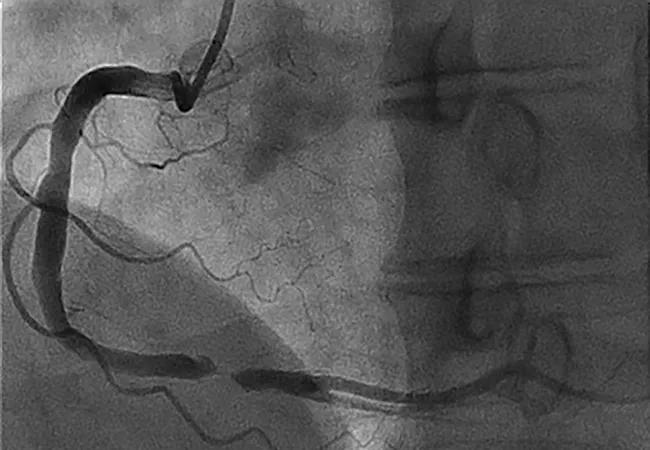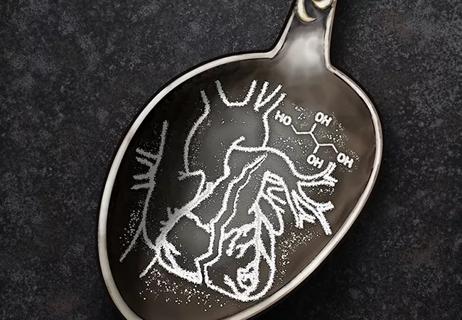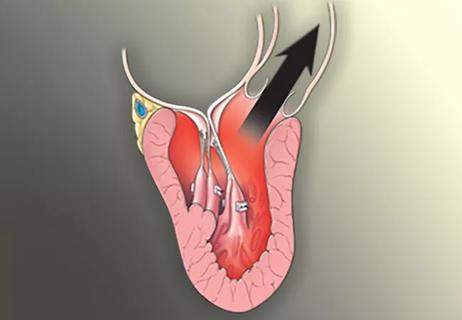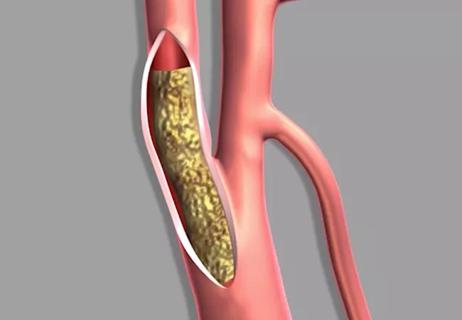Study finds efficient lesion crossing, good procedural success

An initial antegrade wiring escalation approach for crossing coronary chronic total occlusion (CTO) lesions using a new guidewire technology facilitates efficiency and success with excellent safety. So concludes a study recently published in the Journal of Invasive Cardiology (2020;32[5]:161-168) involving use of the guidewires for 164 consecutive CTO lesions treated at Cleveland Clinic.
Advertisement
Cleveland Clinic is a non-profit academic medical center. Advertising on our site helps support our mission. We do not endorse non-Cleveland Clinic products or services. Policy
The study assessed a guidewire type novel to the United States — polymer-jacketed, tapered-tip, low-force guidewires with composite-core, dual-coil design. The research was investigator-initiated and involved no formal industry funding.
“This study details our initial experience using these guidewires as part of an antegrade-first wiring approach in unselected patients,” says lead author Jeffrey Rossi, MD, a fellow in the Department of Cardiovascular Medicine at Cleveland Clinic. “Their performance may lead to extending the spectrum of lesions recommended for this percutaneous coronary intervention strategy.”
For coronary CTOs, advanced crossing strategies associated with a higher risk of complication are often selected as alternatives to an antegrade strategy because of inadequate wire technology. But with the availability of new guidewires with technological advances (composite-core, dual-coil design with polymer-jacketed and tapered tips), both the Euro and Asia-Pacific CTO Clubs favor an antegrade-first strategy.
“In recent years, Cleveland Clinic started an institutional practice to begin all CTO cases with antegrade wire escalation using the novel guidewires regardless of lesion characteristics,” explains the study’s senior author, Jaikirshan Khatri, MD, an interventional cardiologist who specializes in CTO interventions.
The investigation analyzed outcomes from 164 consecutive CTO lesions (from 155 patients) treated at Cleveland Clinic from March 2017 to December 2018, when a primary antegrade wire escalation strategy with the novel guidewires was used for all CTO cases regardless of angiographic lesion characteristics.
Advertisement
Among the 155 patients, mean age was 64 ± 9.6 years and 83.5% were male; 37.2% had prior coronary artery bypass grafting and 45.7% had diabetes. Most procedures (69.5%) were performed for symptom relief.
Among the lesions, 31.1% were prior failures, 15.9% were in-stent restenoses and 29.3% were previously bypassed. Mean CTO length was 25.0 ± 14.0 mm.
The overall technical success rate was 84.1%, with 67.7% of lesions crossed antegrade, 12.8% crossed retrograde and 3.7% crossed using antegrade dissection and re-entry. Antegrade success rates were evaluated according to procedural complexity as measured by Japanese CTO (J-CTO) score, as follows:
Among lesions in which the novel guidewires were able to cross antegrade, the following median wiring times were observed, presented by level of complexity:
The differences in wiring times did not reach statistical significance (P = 0.20).
In-hospital major adverse cardiac events occurred in 1.3% of patients. Four wire perforations occurred, with none directly related to the novel wires. There were no in-hospital deaths.
Success rates and wiring times in this study compare favorably with those of other published research, although exact comparisons are hampered by most studies not specifying which wire crossed the lesions, the researchers note. This study, they add, is the first to specifically comment on the performance of these wires.
Advertisement
The researchers emphasize the following major findings:
Advertisement
Advertisement

Blood test can identify patients who need more frequent monitoring or earlier surgery to prevent dissection or rupture

Study authors urge reevaluation of the sweetener’s safety designation by food regulators

Surprise findings argue for caution about testosterone use in men at risk for fracture

Findings support emphasis on markers of frailty related to, but not dependent on, age

Additional analyses of the two trials presented at 2023 ESC Congress

Prospective SPIRIT-HCM trial demonstrates broad gains over 12-month follow-up

Review of our recent experience shows it’s still a safe option

Machine learning may improve risk prediction and guide therapy